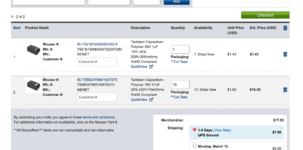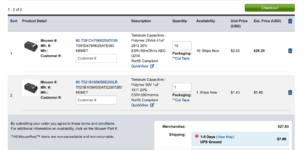Yep. That's correct.
They could be larger. That looks like Mouser in the screenshot - You'll have to check the "Case Code - mm" section of the datasheet for the part you're looking at to see what size it is. I think 7343 is the right size.
As a side note: I recently bought a bunch a parts myself and I had originally planned to do a Digikey or Mouser order but after loading everything in my cart I went and checked
Console5 and they were shockingly cheaper for the Mac related stuff I was ordering. They also specifically made note that they were including 25v polymer capacitors for C3, C4, C9, C10 in their SE/30 kit which made me feel pretty good about them knowing what to provide.




